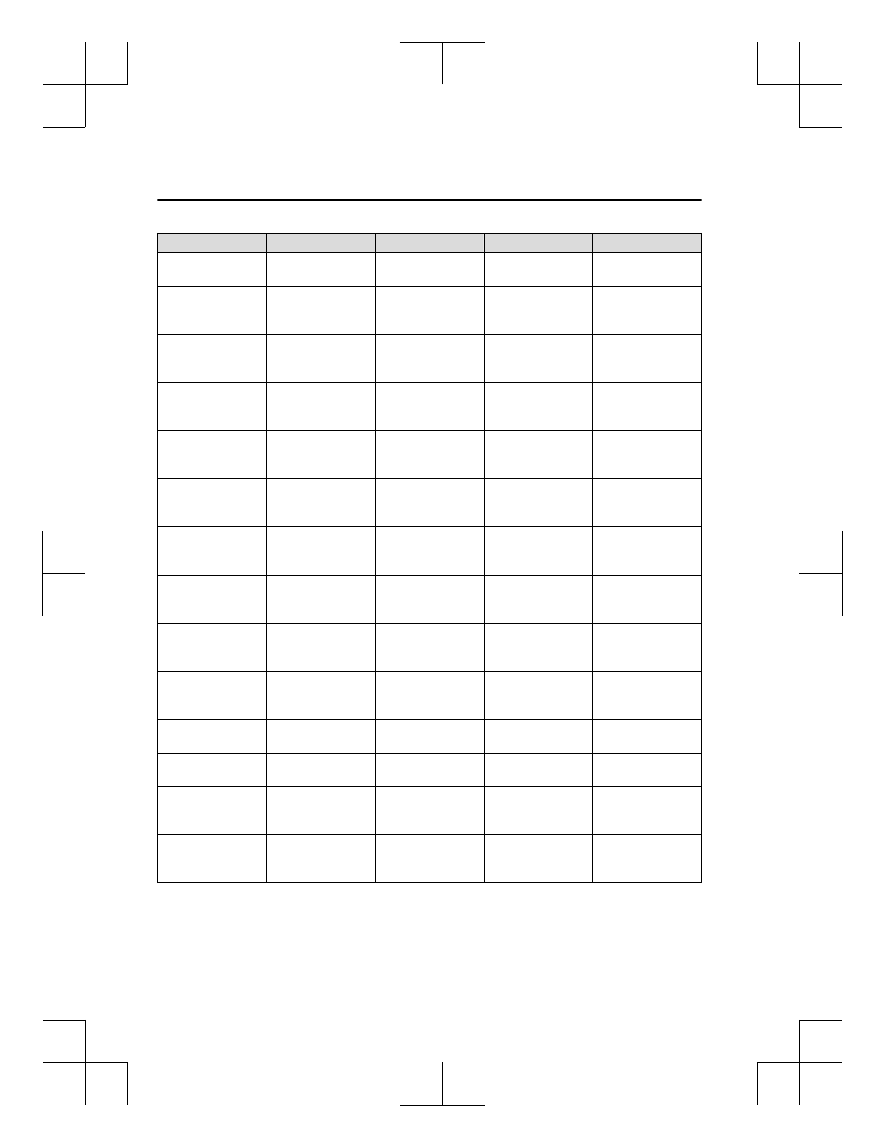Mazda CX-5 (2019 year). Manual - part 4

Seating position
Passenger
Rear (Left)
Rear (Center)
Rear (Right)
i-Size seating posi‐
tion (Yes/No)
No
Yes (i-U)
No
Yes (i-U)
Largest suitable rear‐
ward facing fixture
(R1)
No
Yes (IL)
No
Yes (IL)
Largest suitable rear‐
ward facing fixture
(R2)
No
Yes (IL)
No
Yes (IL)
Largest suitable rear‐
ward facing fixture
(R2X)
No
Yes (IL)
No
Yes (IL)
Largest suitable rear‐
ward facing fixture
(R3)
No
Yes (IL)
No
Yes (IL)
Largest suitable for‐
ward facing fixture
(F2)
No
Yes (IUF)
No
Yes (IUF)
Largest suitable for‐
ward facing fixture
(F2X)
No
Yes (IUF)
No
Yes (IUF)
Largest suitable for‐
ward facing fixture
(F3)
No
Yes (IUF)
No
Yes (IUF)
Largest suitable lat‐
eral facing fixture
(L1)
No
No
No
No
Largest suitable lat‐
eral facing fixture
(L2)
No
No
No
No
Largest suitable
booster fixture (B2)
No
Yes (IUF)
No
Yes (IUF)
Largest suitable
booster fixture (B3)
No
Yes (IUF)
No
Yes (IUF)
Non i-size compati‐
ble with a support
leg (Yes/No)
Yes
*1
Yes
No
Yes
Lower ISOFIX an‐
chorages but without
Top Tether (Yes/No)
No
No
No
No
U = Suitable for “universal” category restraints approved for use in this mass group.
UF = Suitable for forward-facing “universal” category restraints approved for use in this mass group.
IUF = Suitable for ISOFIX forward child restraints systems of universal category approved for use in the mass
group.
Essential Safety Equipment
Child Restraint
2-42
CX-5_8HE3-EA-18I_Edition1
2018-6-29 13:44:47